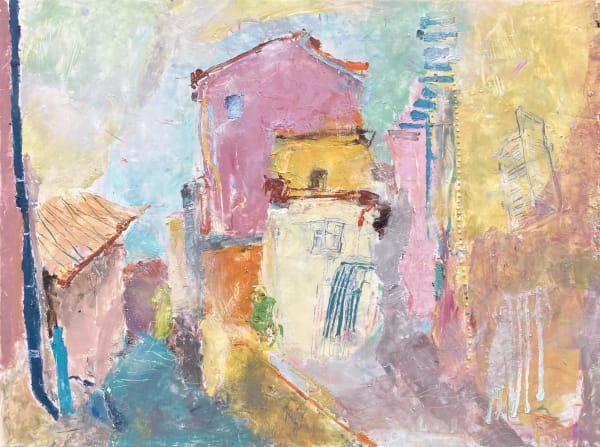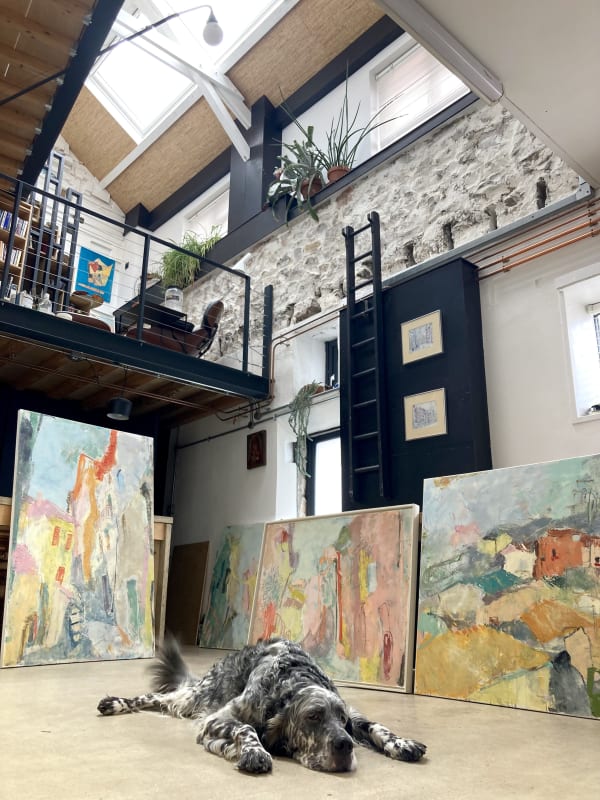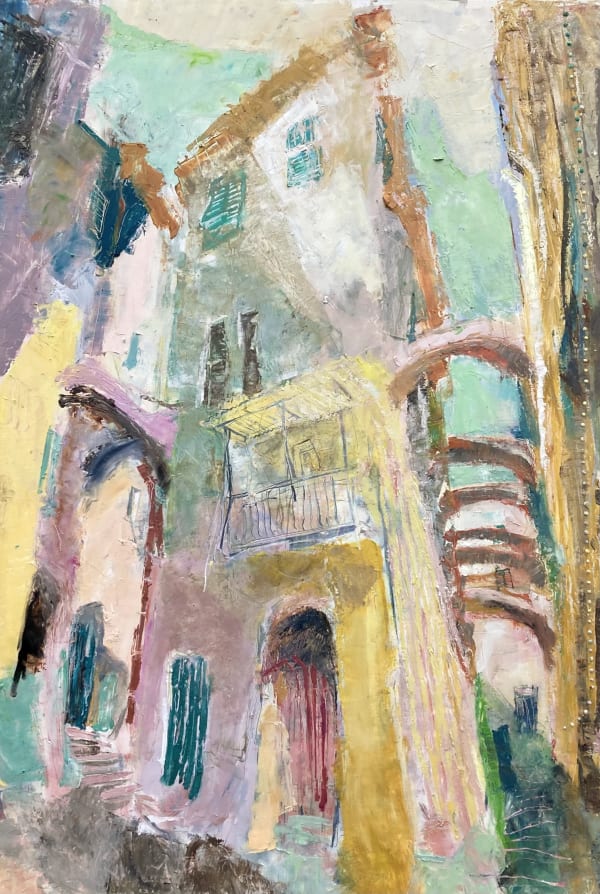To see things from different viewpoints and perspectives is a very special skill. I think of it as though I am witnessing a theatre rehearsal from backstage and watching the premiere with the audience.
– Julia Maleeva, 2024
EASTWOOD FINE ART: You initially trained as an architect, could you tell us about this background and how you became an artist?
JULIA MALEEVA: In fact, I was originally trained classically in fine art and as a specialist in etching and drypoint. One of my teachers told me I couldn’t do colour and pushed me to go into the world of black and white. After five years, I decided I was not good enough to be a painter and went to study architecture. The big achievement came when I did my architectural postgraduate studies in the USA, people there admired my hand-ink sketches and you can find many of them in the Library of Congress. I’ve continued sketching and doing small graphic art since then.
The major change came when I arrived in Provence for the first time. Having finished an exhausting renovation project, I took a break and appeared to find a different world. And that was it, I fell so much in love with the place that I ordered big canvases on the way back and started painting again, this time with colours. I return every summer and find more and more inspiration.
EFA: Your paintings often portray unusual or overlooked vantage points within towns and villages, reanimated in beautiful warm hues – how do you begin and where do you find inspiration?
JM: The view from above is an idea that has haunted me all my life. People have asked me: “Do you ever dream you are flying?” Yes, I do very often, and in fact, I have a pilot licence and once had a small aeroplane. To see things from different viewpoints and perspectives is a very special skill. I think of it as though I am witnessing a theatre rehearsal from backstage and watching the premiere with the audience.
When I was a kid my mum took me to the Hermitage in St Petersburg. I’ve never forgotten seeing a Rembrandt with strong daylight coming from the window next to the painting. Some buildings aren’t built to fit the purpose of an art gallery. Many years later at university, I made a project for an art gallery where the observer had to climb stairs in order to appreciate the painting from different heights.
I am always trying to do my sketches from the top of the fence, climbing onto a roof, or just kneeling next to the dog on the pavement, watching closely how buildings disappear into the sky.
EFA: The scenes partly depict real places and simultaneously dissipate into abstraction, creating an ethereal, unworldly atmosphere.
JM: It’s all about the light for me. Mediterranean light is velvety warm, it gently strokes the old houses, transforming their colours into a beautiful symphony. I find it even more interesting when you hide in the shadows and see the accumulation of the mellow hues of phthalo and turquoise. All my inspiration comes from these forgotten old villages that are filled with an abundance of sunlight.
My other very favourite place to paint is Cornwall. Exploring its light which is in constant motion and the constant race between the running shadows cast over the bubbling waves. And of course, the place where I come from, the rural countryside on the Black Sea in Bulgaria, where the hot light is at a standstill. I want to preserve the sound of the bees, cadmium shadows on the old plaster, and the cutting bright contour of the downpipes.
EFA: What have you been thinking about recently, have there been any artists, exhibitions, books or music for example, that have been interesting to you?
JM: Last month I visited a fascinating exhibition Bonnard-Matisse, a friendship at the Fondation Maeght in Saint Paul de Vence. Since then I have been wondering and imagining who the artist is that I would want to be in as close a relationship with, to exchange letters, thoughts, and inspiration. And how these two art giants managed to prevent themselves from being influenced and affected by each other, and stayed true to their strong artistic personalities…
I also listen to lots of audio books while painting. It’s my time to read… You can add something from the storyline into the painting, you can use the title of the next chapter for an idea. At the moment, I am listening to There Are Rivers in the Sky by Elif Shafak.
Mixing together different types of art is magic. I’ll start a new painting, then go to a theatre in the evening and the next day I find myself full of new ideas.
For SPOTLIGHT, you are showing two new works – A freshly made Ratatouille and Into the vaulted passage of time, both 2024 – could you tell us more about them and their titles?
I am classically trained and remember spending many long days sketching and painting en plein air. Most of my paintings start from the street – in the middle of a village, someone is cooking, there are delicious smells, the sun is shining very bright. You can define the shadows as a topographic map seen from above. I’m always chasing these perceptions to create the atmosphere and to transport the viewer into that special place in that moment.
A freshly made Ratatouille was created near a small tavern in a village in Provence and this was the day’s special…
Into the vaulted passage of time is from Taggia, a medieval village in Italy, where you are surrounded by black cats and curious old ladies, someone is offering you a coffee, the other wants to predict the future…






